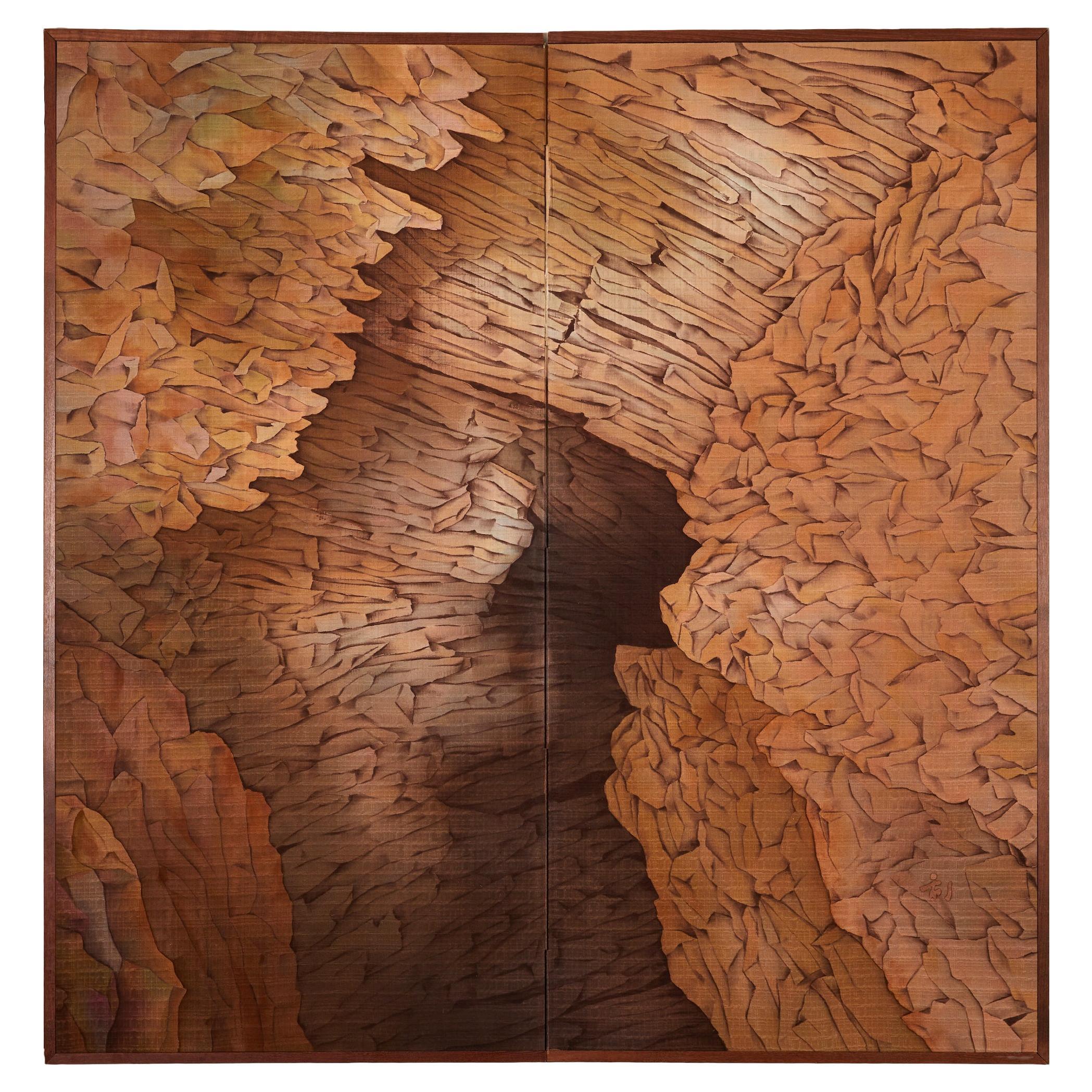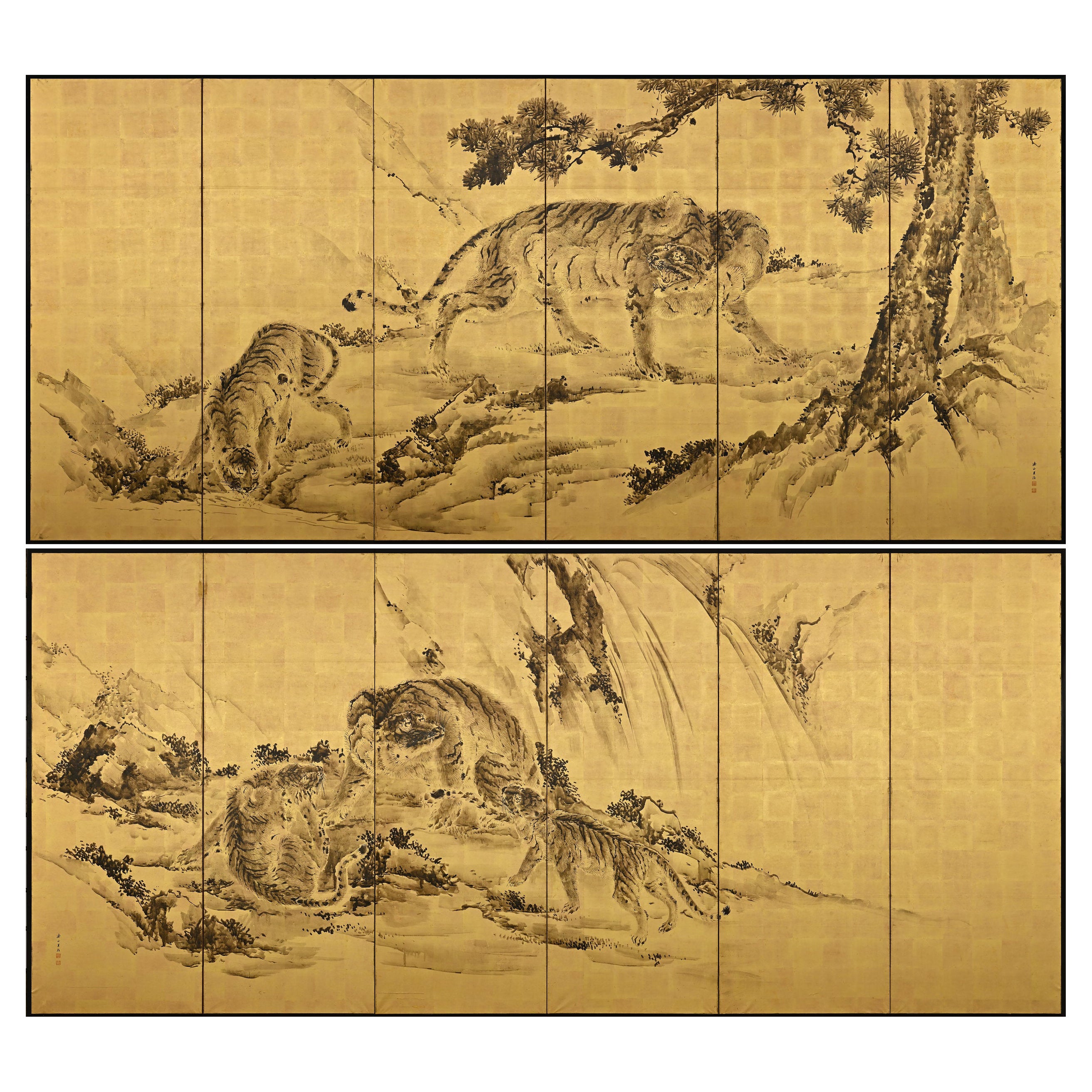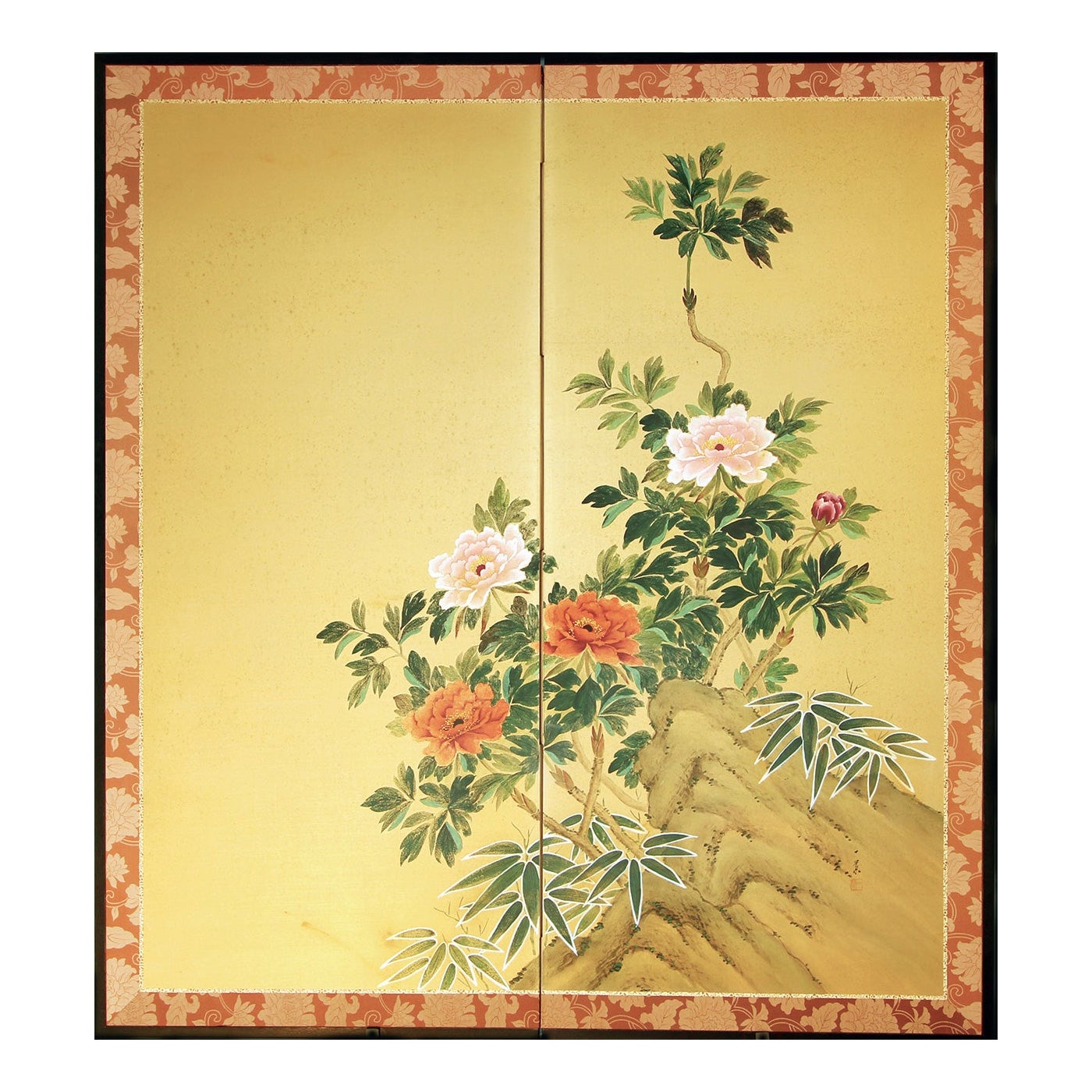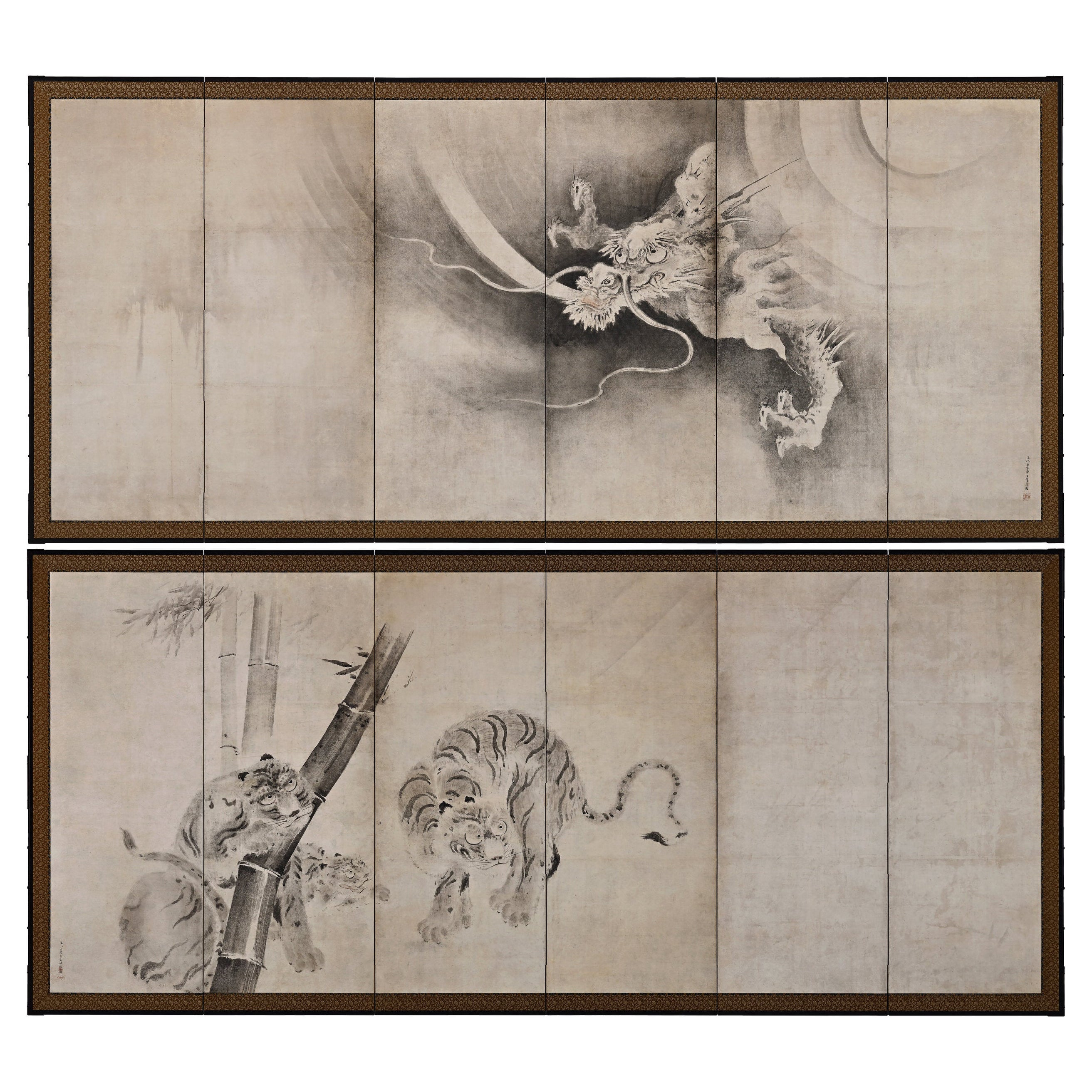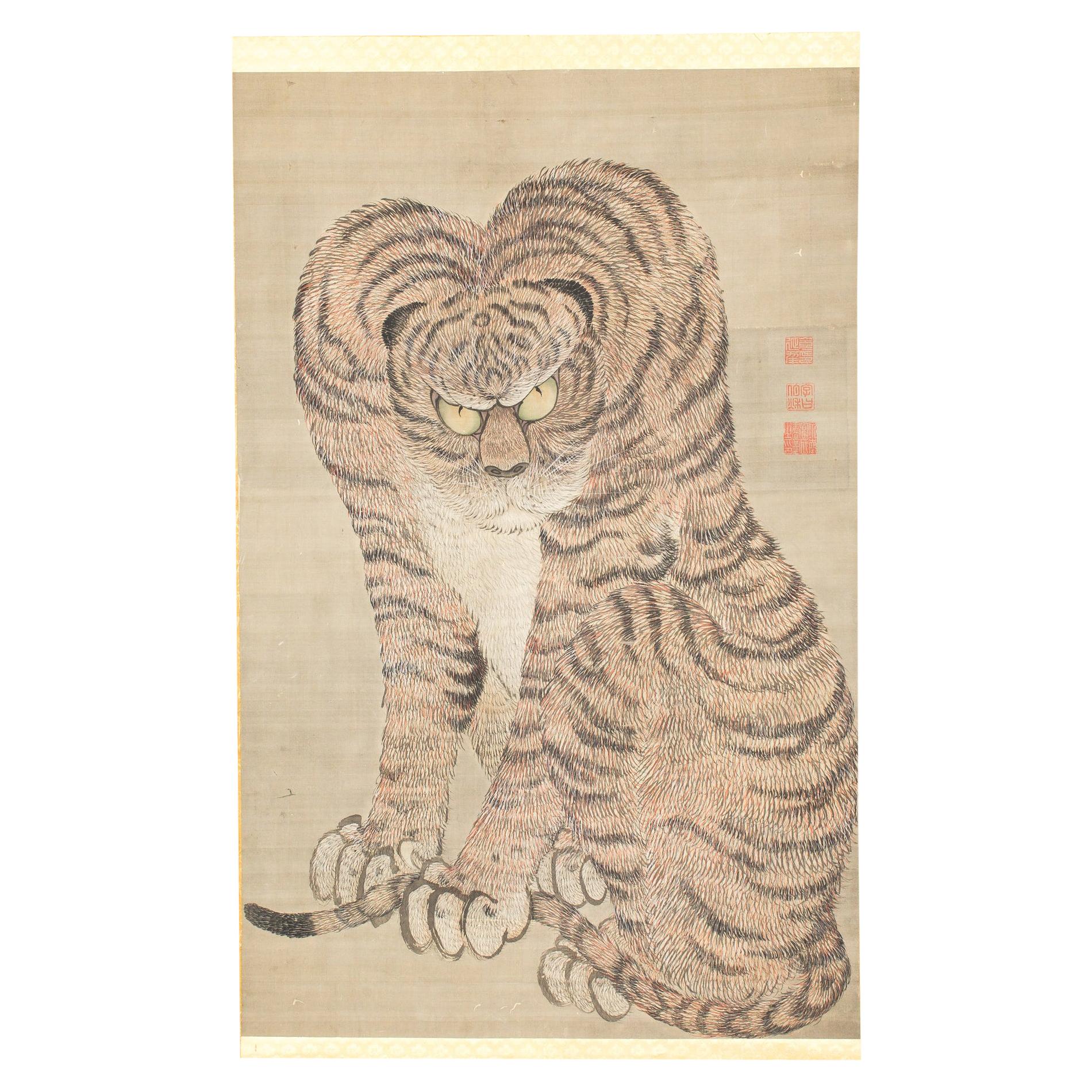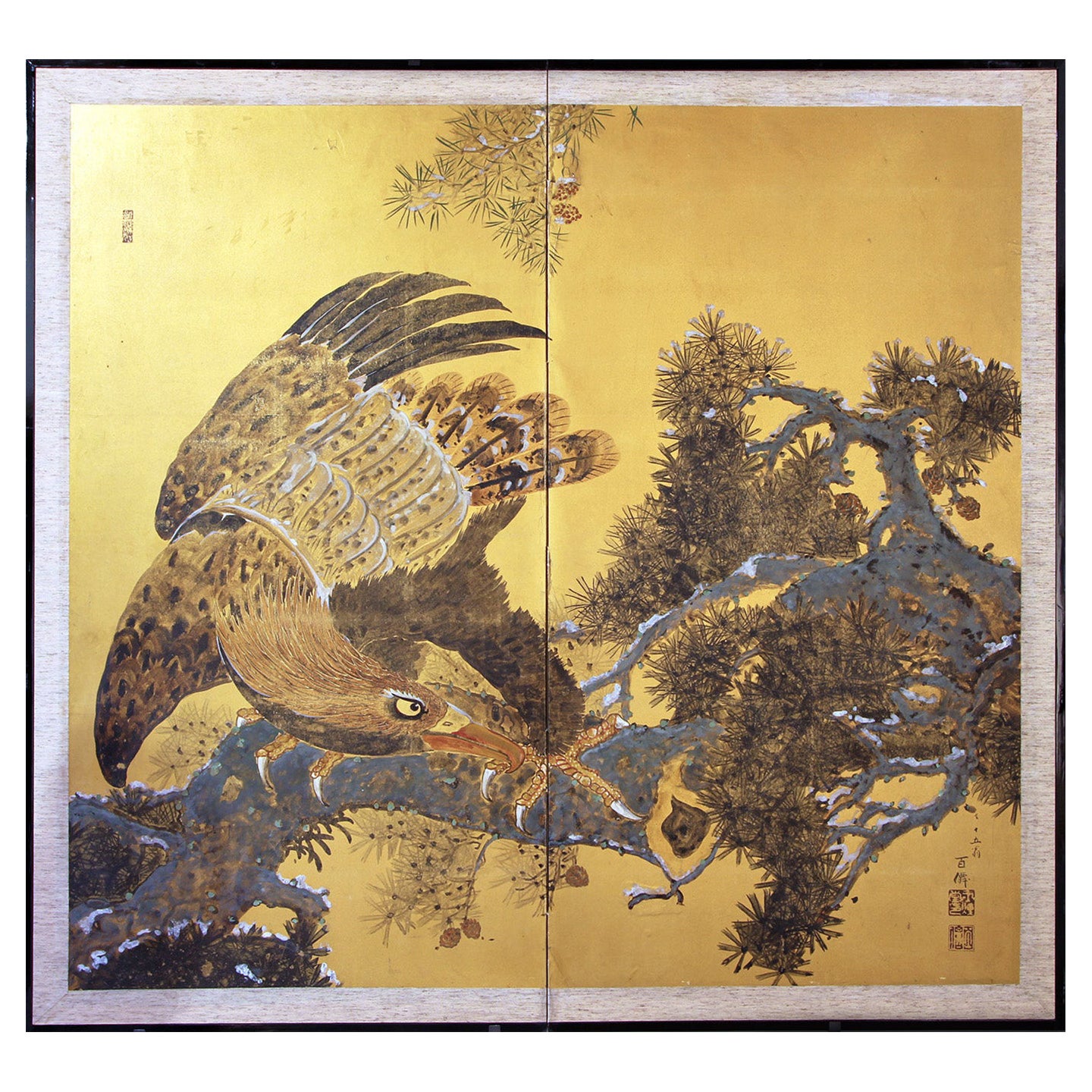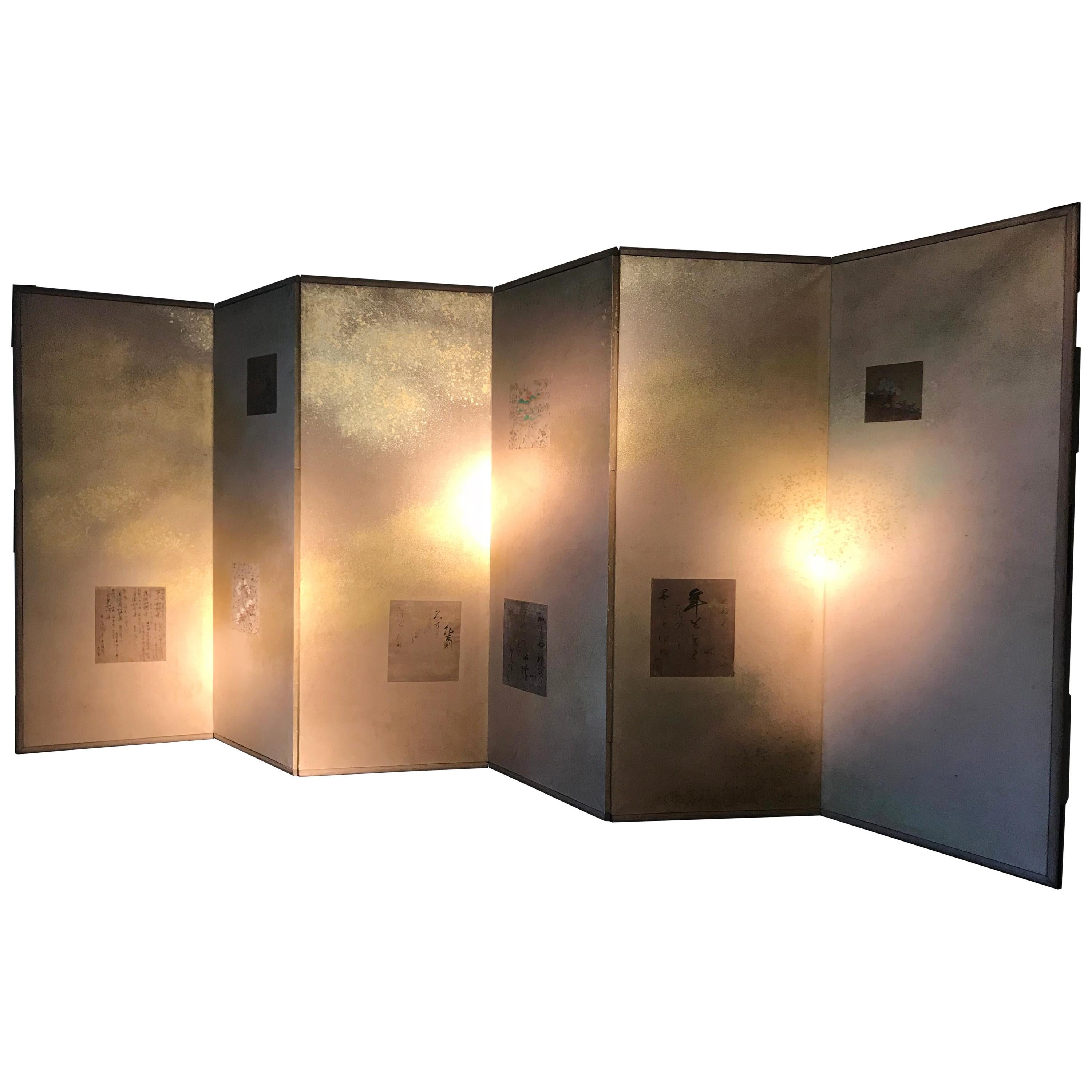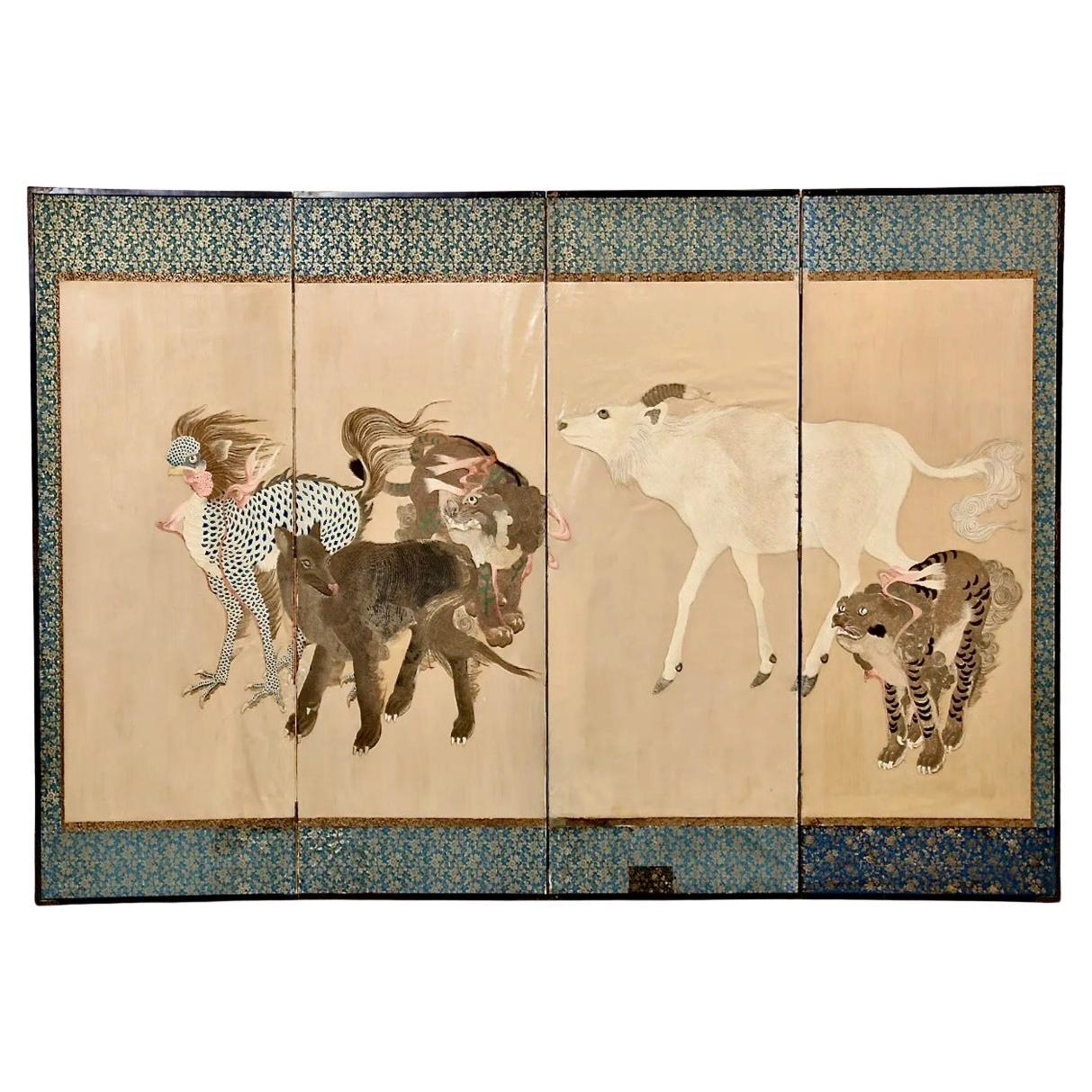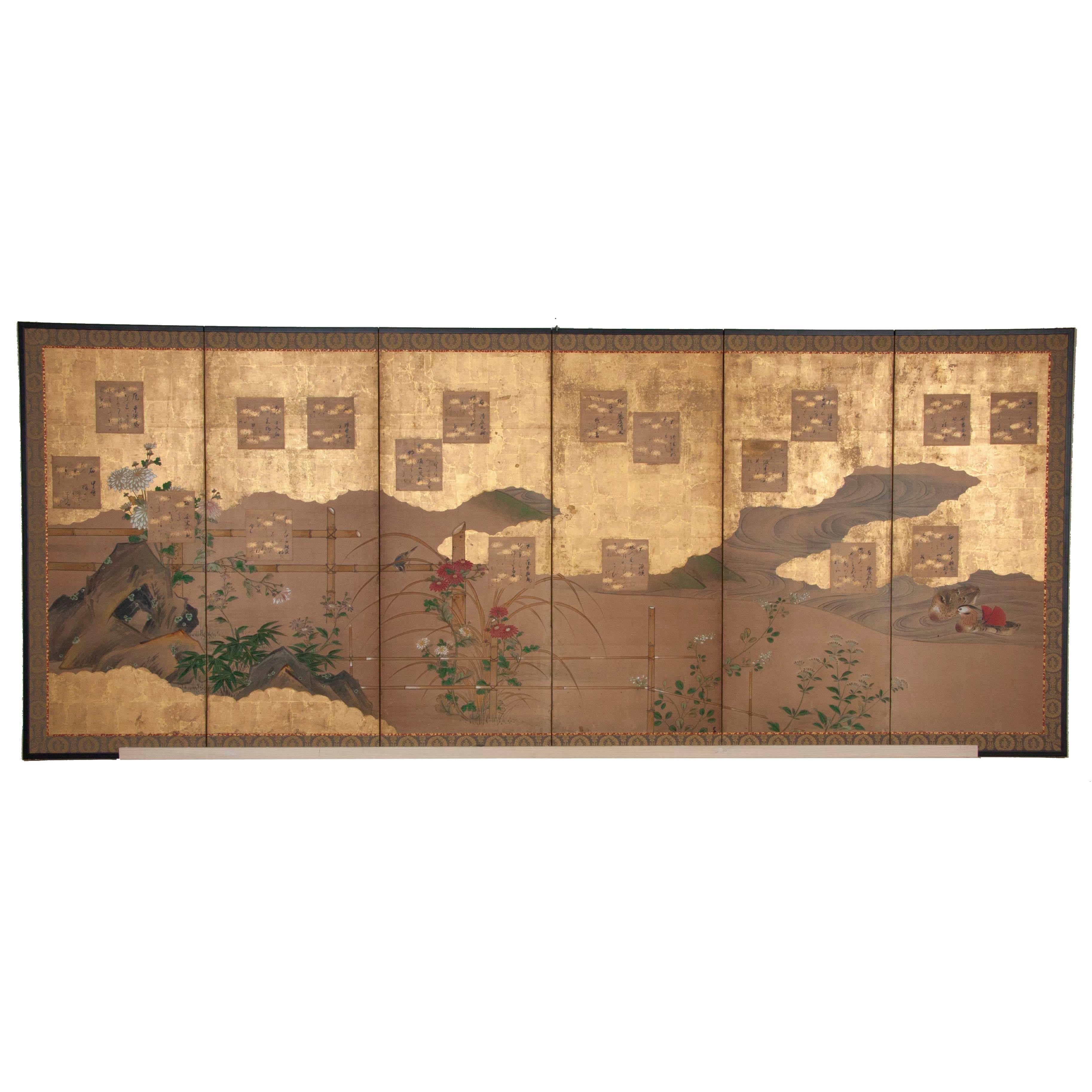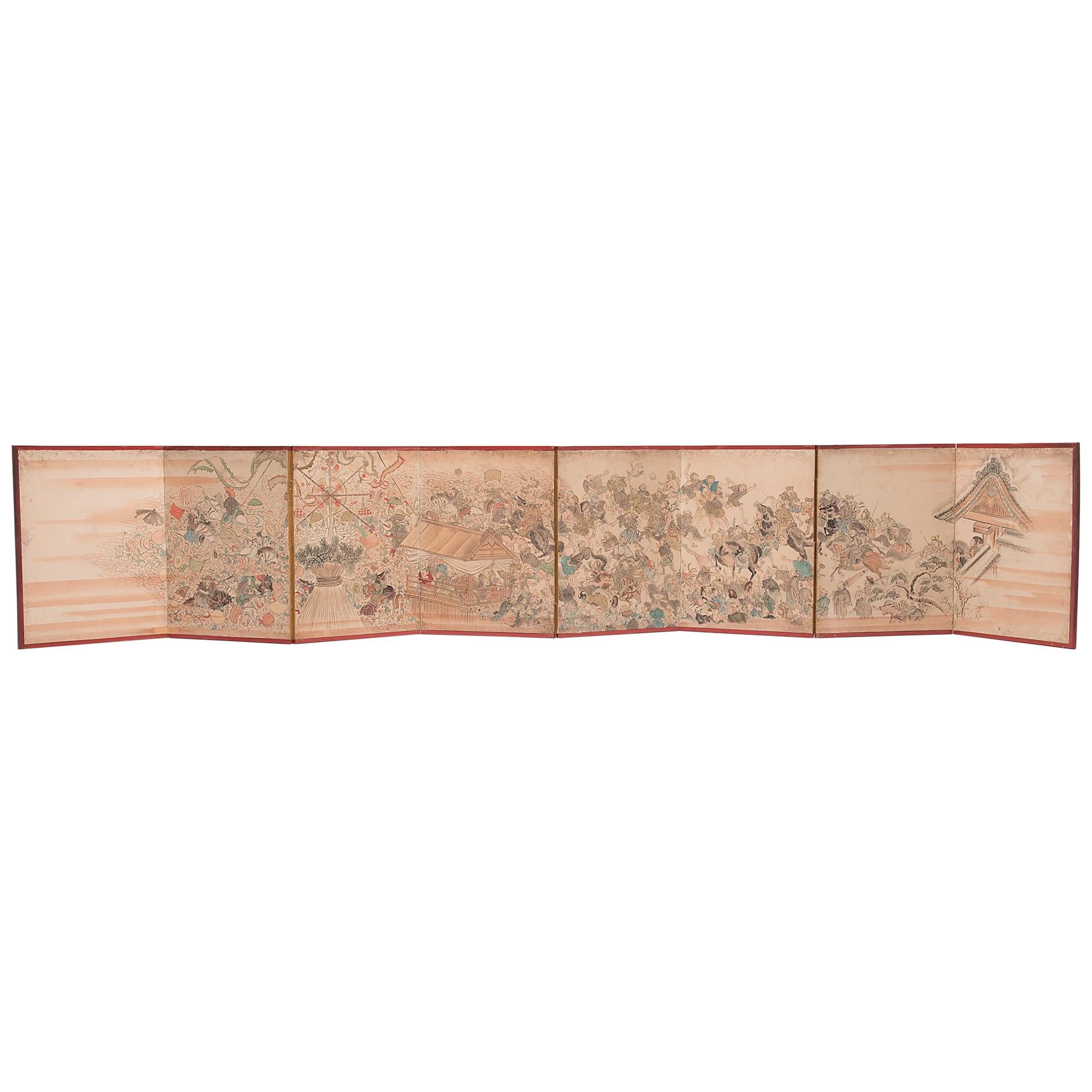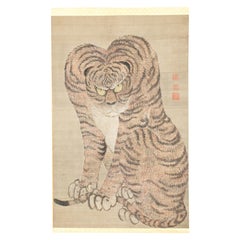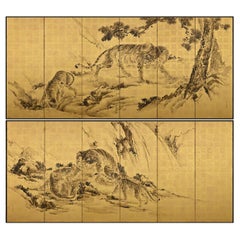
Japanese Screen "Siberian Tigers"
View Similar Items
Want more images or videos?
Request additional images or videos from the seller
1 of 2
Japanese Screen "Siberian Tigers"
About the Item
- Dimensions:Height: 67 in (170.18 cm)Width: 148 in (375.92 cm)Depth: 1 in (2.54 cm)
- Place of Origin:
- Period:1900-1909
- Date of Manufacture:circa 1900
- Condition:Condition report upon request.
- Seller Location:Hudson, NY
- Reference Number:Seller: S14891stDibs: LU85512223322
About the Seller
5.0
Recognized Seller
These prestigious sellers are industry leaders and represent the highest echelon for item quality and design.
Established in 1971
1stDibs seller since 2008
151 sales on 1stDibs
Typical response time: 11 hours
Associations
The Art and Antique Dealers League of AmericaAntiques Associations Members
More From This SellerView All
- Japanese Four Panel Screen: Two TigersLocated in Hudson, NYTwo tigers exchanging amorous glances. Kano School painting.Category
Antique 18th Century Japanese Paintings and Screens
MaterialsPaper
- Japanese Two Panel Screen: White Tiger GrottoLocated in Hudson, NYA mysterious passageway with natural rocky detail as the scene drifts deep into the darkness. Dyed fabric mounted with a natural wood trim. Signed on back and lower right corner. Sig...Category
Early 20th Century Japanese Paintings and Screens
MaterialsFabric, Wood
- Large Japanese Scroll of a TigerLocated in Hudson, NYWonderfully large and bold tiger painted in ink and mineral pigments on silk mounted with silk brocade border. Seal reads: Miyaguchi (alternative reading: ...Category
Antique Early 1800s Japanese Edo Paintings and Screens
MaterialsSilk
- Japanese Two Panel Screen, HollyhocksLocated in Hudson, NYEdo period (18th century) furosaki screen (tea screen), with seal of the artist: Jakyu. Korin School painting, employing Kenzan style of split image. (see "Morning Glories" Metropoli...Category
Antique 18th Century Japanese Edo Paintings and Screens
MaterialsWood, Silk, Paper
- Japanese Six-Panel Screen, ChrysanthemumsLocated in Hudson, NYJapanese six-panel screen: Chrysanthemums, Edo period (circa 1800) painting of a variety of chrysanthemums in a garden landscape, with sparrows. Mineral p...Category
Antique Early 1800s Japanese Edo Paintings and Screens
MaterialsGold Leaf
- Japanese Screen Painting of StallionsLocated in Hudson, NYJapanese two panel screen: Painting of stallions. Kano school of painting. Mineral pigments on mulberry paper.Category
Antique 19th Century Japanese Paintings and Screens
You May Also Like
- Japanese Screen Pair, Tigers by Kishi Renzan, Late Edo PeriodLocated in Kyoto, JPKishi Renzan (1804-1859) Tigers Pair of six-panel Japanese screens. Ink and gold-leaf on paper. In this monochromatic pair of six-fold Japanese screens painted on gold-leaf, Kishi Renzan has created a breathtaking composition of a family of tigers. The screens are filled with a sense of drama which is conveyed by both the subject matter and the wet, expressive brushwork. The running mountain stream and the towering waterfall allude to refreshment during the summer months and we feel the tiger families familiarity and security within their environment. Renzan’s master, Kishi Ganku...Category
Antique Mid-19th Century Asian Edo Paintings and Screens
MaterialsGold Leaf
- Japanese screenBy Japanese StudioLocated in Brescia, ITTwo-panel screen of Rinpa school painted with mineral pigments on silk and rice paper. It depicts colorful peony flowers. This is the flower of spring, symbolizing success and pro...Category
20th Century Japanese Showa Paintings and Screens
MaterialsSilk, Paper
$6,532 - 17th Century Japanese Screen Pair. Tiger & Dragon by Kaiho YusetsuLocated in Kyoto, JPKaiho Yusetsu (1598-1677) Tiger and Dragon Early Edo Period, Circa 1650 A Pair of Six-fold Japanese Screens. Ink and slight color on paper. Dimensions: Each screen: H. 171 cm x W. 380 cm (67.5’’ x 149.5’’) In this pair of early Edo period Japanese screens a group of tigers prowl in a bamboo grove whipped with fierce wind, while a dragon claws through clouds and mist. The dragon embodies elemental qualities - looming out of the mist, the coils of its body disappearing in the clouds. The dragon is calling for rain, symbolizing spring which is considered the fountain of life. On the other side, the tigers calls for the wind, symbolizing autumn which is considered the end of life. Tigers were familiar motifs within Japanese art from ancient times though the animals were imaginary to the people in the 17th century. While dragons and tigers are usually associated as sacred and ferocious, in this painting, both animals have rather amusing expressions. The tigers appear to glare at the dragon with cat-like eyes, and the look on the swirling dragon’s face appears almost affectionate - lending a playful flair to an otherwise magnificent theme. The tiger and dragon are cosmological symbols of the balancing forces in the world. Screens such as this were originally meant to express the fluctuating nature of the world. For Japanese in the early Edo period, they likely suggested the powers of the cosmos. In Japan the tiger and dragon motif was originally absorbed into the circles of Zen monasteries before spreading into the secular world. The theme especially appealed to the military classes with the Kano school, the official painters to the Shogun and the samurai, being the leading contributors. The painter of this pair of screens, Kaiho Yusetsu (1598-1677), was closely patronized by the third Shogun Tokugawa Iemitsu. In his later years he worked with Kano school artists...Category
Antique Mid-17th Century Japanese Edo Paintings and Screens
MaterialsSilk, Wood, Paper
- Japanese screen two-panelBy Japanese StudioLocated in Brescia, ITEagle on a pine branch with traces of white snow. A rare subject for this mid-century two-panel screen, painted in mineral pigments on gilded paper. The screen is a nice size and is ...Category
20th Century Japanese Showa Paintings and Screens
MaterialsPaper
- Pair of Japanese ScreensLocated in Schellebelle, BEExceptional pair of Japanese screens, 20th century Six parts, six times 45 cm wide Gold spotted paper with parts of old screens.Category
Mid-20th Century Japanese Paintings and Screens
MaterialsPaper
$6,102 / set - Japanese Kyoto Embroidered ScreenLocated in Pasadena, CAThis is a finely stitched Kyoto embroidery screen that dates to the Meiji Era (1868 - 1912). Kyoto has been celebrated for its skilled artistic embro...Category
Antique Late 19th Century Japanese Japonisme Paintings and Screens
MaterialsBrass
Recently Viewed
View AllMore Ways To Browse
Antique Tiger Painting
Tiger Screen
Tiger On Silk
Japanese Tiger Painting
Tiger Art On Silk
Silk Tiger Painting
Japanese Tiger Screen
Japanese Silk Tiger Painting
Japanese Panel Art Screen
Gold Japanese Panel
Antique Japanese Screen Asian Antiques
Japanese Paper Screen
Chinese Reverse
Silk Screens Framed
Screen With Trees
Japanese Screen Framed
Japanese Wood Painting
Framed Asian Panels

